20191012 CLHG Report-Child-Labour-1810-1845
20191012 CLHG Report-Child-Labour-1810-1845
On Thursday 11th October 2019 the members and guests listened attentively to a talk by Anna Alexander on “Child Labour in Warrington in the 19th Century” concentrating on the years 1810 to 1845. This period saw a great change in how the “Poor Laws” were administered and the effect of the early industrialisation, with the vast employment of children in the factories and town trades.
The talk was derived from the extensive research on the period 1810 to 1845 during Anna Alexander’s studies for an M.A. from the Open University following her retirement.
Your webmaster has added a comment at the end about present day child labour.
Outline of Industrial Revolution on Warrington in early 1800s.
Warrington had enlarged to a town of about 10,000 people by 1801 in a very haphazard way based on the trades that could be practised in the town and the ‘new trades’ of the industrial revolution.
It was unsanitary, filthy, with very close packed houses in narrow streets without sewage facilities or running water, and ‘yards’ behind and inside closed closes. By 1861 it was over 26,000.
Brief list of events.
1756 Warrington gains its first newspaper
1760 Warrington is famous for its sacking and sailcloth. There is also a pin making and a file and tool making industry in Warrington. There were also sugar refineries and a glass industry.
1801 Warrington is a flourishing town with a population of over 10,500
1813 Improvement Commissioners are given powers to pave the streets Warrington and to clean and light them (with oil lamps)
1821 Warrington is lit by gas
1831 The railway comes to Warrington
1832 Cholera kills 169 people in Warrington
1846 Warrington gains a piped water supply
1847 Warrington is made a borough
1848 The first public library in Warrington opens
1860 A spire is added to St Elphin's Church
Some of these crafts & trades were very well paying, so for youngsters to enter these trades there was a way to have a reasonable life, while others were in very poor paying jobs (if they could get one) or worked at home in hard conditions to aid mothers or fathers doing ‘outwork’ for others.
Agriculture nearby and coal and cloth (sail) making occupied others and the sail making industry for a time was prosperous.
Warrington though a relatively large town was actually had a small area.
Graphic Map.

Above. 1832 map Warrington Screenshot 2019 10 11 12 26 47
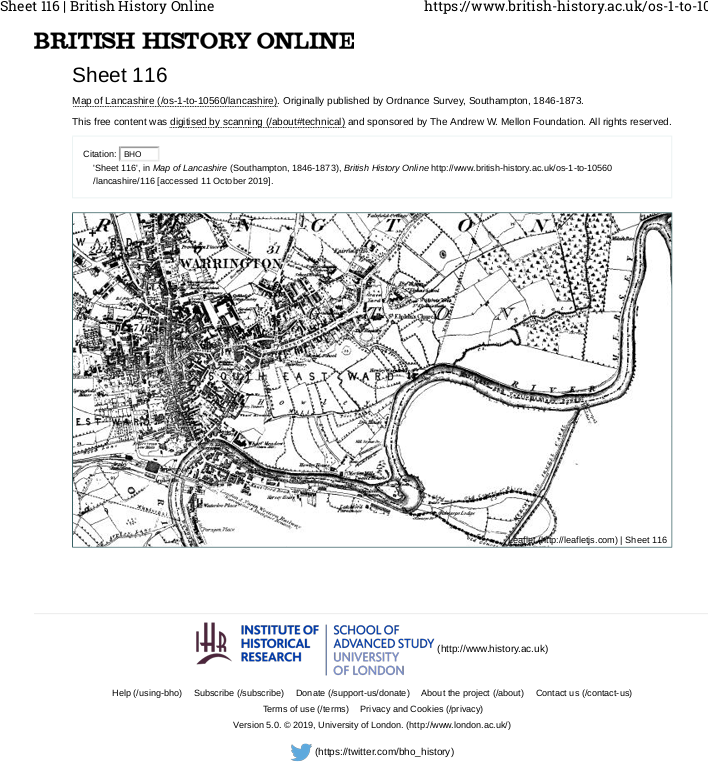
From local government website
Warrington Local government site summarises at link shown as
https://www.warrington.gov.uk/info/201142/local_history_and_heritage/50/town_history
(After the civil wars ) It wasn't long before the confident and outward-looking character of Warrington re-emerged. The town embraced the industrial revolution. it became the centre of not just one, but a whole myriad of industries, from copper smelting to sail-making and pin manufacture. The navigational properties of the river Mersey were improved, canals were built, and the town grew yet more prosperous and popular.
Speaker's talk synopsis.
Our speaker has kindly given us a synopsis of her talk and a copy of some of her slides which are given below.
QUOTE
Child Labour in Warrington 1810-1845 - by Anna Alexander
The period of 1810-1845 was a time of huge change midst the upheaval caused by the industrial revolution and the Napoleonic wars. Political and social disruption, such as the ‘Luddite’ riots during 1811-1816, the demonstrations which resulted in the so-called ‘Peterloo Massacre’ in Manchester in 1819, and the Chartist movement of the 1830s and 1840s, caused governments to fear revolution. There was a belief that the ‘lower orders’ ‘...aimed somehow at the utter unravelling of society...’, and in the absence of former methods of social control, such as that imposed through deference for the upper classes, ‘...modern bureaucracies of official morality...’ arose including the New Police, who were strongly resented by the working classes. Against this background, the lives of working-class people had been irrevocably changed by a move from self-sufficiency and agricultural labour to employment in factories, and the invention of powered weaving looms meant that certain jobs could be done by unskilled workers, and in particular by children. Child labour and its exploitation has been described as ‘...one of the most shameful events in our history’, and much early historical debate on child labour focussed on the appalling working conditions and long hours of child workers. Yet child labour was an accepted part of life in the eighteenth and nineteenth century and childhood was seen very differently then.
A recent drama on Channel 4 told the story of children who were apprenticed at Quarry Bank cotton mill in Styal near Manchester in the nineteenth century. Cotton mills were dangerous places to work, and although the television series undoubtedly portrayed the very worst aspects of life in a cotton mill, the jobs were often sought after. Warrington industries came under the government spotlight in the 1830s and 1840s, when parliamentary commissioners were sent to the town to investigate the working conditions of child workers in the town, and their reports have provided historians with valuable evidence on the lives of these children. Warrington was a town of many industries, and child workers, some as young as six years old, contributed to the profits of their employers who included cotton manufacturers, glass makers, wire and file makers pin makers and soap and candle makers. This talk will examine the roles children played in these industries, and how work affected their daily lives. A wide range of industries will be explored, with special emphasis on pin-making, file making and fustian manufacture. There will also be a focus on the employers and their motives.
UNQUOTE
Webmaster note. Illustrations and notes oNf the subjects in the speaker's talk are enlaged upon below.
Illness.

A deadly trade slide notes on climbing boys illnesses PastedGraphic 3 © Anna Alexander pdf
Apart from the major cholera outbreak due to water borne disease there was always the risk of other diseases due to bad conditions.
Graphic. Well water contamination
This central European graphic vividly illustrates the 'spill' from sewage pits and public sewere into local nearby wells thus spreading any waterborne disease, tyical of Warrington "yards".
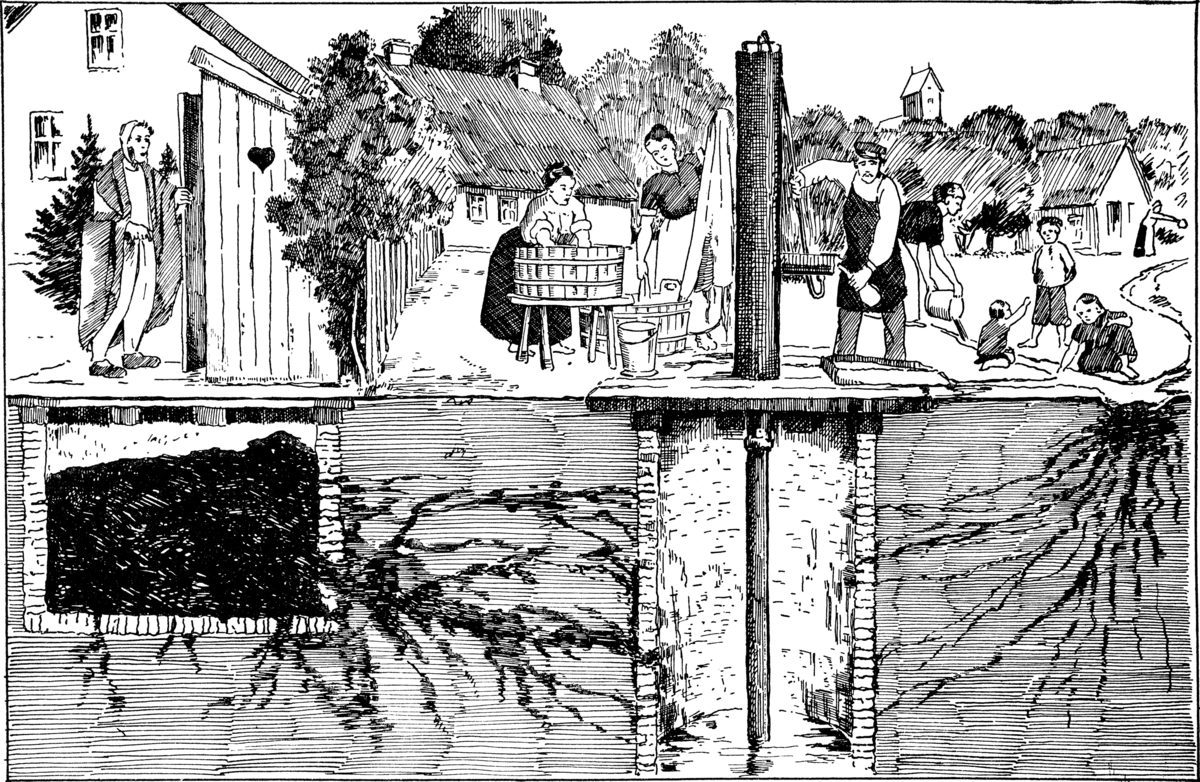
sewer off-spill to well from proxyduckduckgo.com
sewer-off-spill-to-well--1800s_1200px-ForskeligeVeje_ad_hvilkenBroen_kan_inficeres_medTyfusbaciller.

Warrington yard picture c02439, this shows a 'wide clean' yard with drain gullet inset in between stone sets.
The Trades.
Town chimney sweeps
Among the worst occupation was the ‘very slim small boy requirement’ to climb and clean chimneys. Chimney passages often being only a ‘single brick by two bricks’ in area and the vertical rise being often contorted, with the ‘killing bend’ of a 90 degree turn from horizontal to vertical where a boy could fall onto a soot pile and suffocate.
The reclaimed soot was a valuable commodity as it had a resale value.
Illnesses of sweeping boys were very many, including cancer of scrotum.
Graphics: Chimney run, Problems, Dangers, Boys,

Cross-section of a seven-flue stack in a four-story house with cellars.
An 1834 illustration from Mechanics' Magazine, designed to show the contrast between mechanical sweeping and children sweeping chimneys.
A. a hearth served by vertical flue, a horizontal flue, and then a vertical rise having two right-angled bends that were difficult for brushes.
B. a long straight flue (14in by 9in) being climbed by a boy using back, elbows, and knees
C. a short flue from a second floor hearth. The climbing boy has reached the chimney pot, which has a diameter too small for him to exit that way.
E. shows a disaster. The climbing boy is stuck in the flue, his knees jammed against his chin.
G. How a flue could be straightened to make it sweep-able by mechanical means
H. A dead climbing boy, suffocated in a fall of soot that accumulated at the cant of the flue.

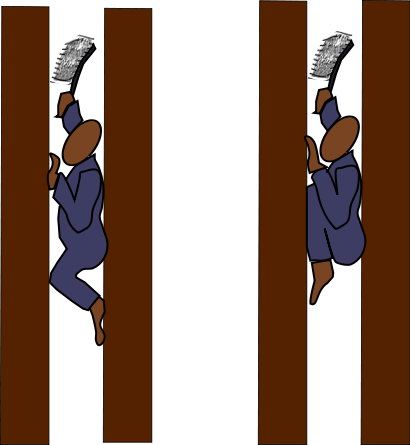
Child-Labour/climbing-and-stuck-boy—CcbySA__410px-Climbing_boys_in_chimneys.svg.png
Left one climbing. Right one stuck, and only way to rescue is by diging out of wall, as Crookshank drawing below.

Chimney boy deaths ex Dr George Phillips book showing Crookshanks drawing 679 "Death of chimney boys 7386_f1024".
One boy was trapped , the second was sent up to rescue the first by tying a rope onto his legs to pull him down, however both died.


Stereoscope view for entertainment purposes. On right. ex dirty english childsweep2, Raw image of forcing a small child (5years?) down chimney
The End of Climbing Boys (in UK).

Slide The end of climbing boys slide PastedGraphic 4pdf © Anna Alexander pdf
Link to drawing in Welcome collection of a boy with cancer of scrotum.
Drawing of chimney boys cancer of scrotum in Welcome collection
Link to Wikipedia page. This cancer among chimney sweeping boys was the first reported industrial cancer in 1775.
Chimney sweep's cancer, also called soot wart, is a squamous cell carcinoma of the skin of the scrotum. It has the distinction of being the first reported form of occupational cancer, and was initially identified by Percivall Pott in 1775.[1] It was initially noticed as being prevalent amongst chimney sweeps.
https://en.wikipedia.org/wiki/Chimney_sweeps'_carcinoma
British Disease.
This was a peculiarly Briitish disease as British chimney climbing boy sweeps worked in normal loose fitting clothes or naked, while German chimney sweeps worked in a tight fiting garment, like a modern lycra body suit. Refer to the pages shown as PDF notes in
A Brief Histroy of Scrotal Cancer
Link:
https://www.ncbi.nlm.nih.gov/pmc/articles/PMC1009212/?page=1
US National Library of Medicine / National Institutes of Health
Extracts from "British Journal of Industrial Medicine" now published as "Occupational & Environmental Medice"
Coal mines.
Coal mines.
Children both girls and boys were used in coal mines for many duties and their small stature allowed them to crawl bend all day through passages, while some were at as stationary post at a passage doorway all day in darkness.

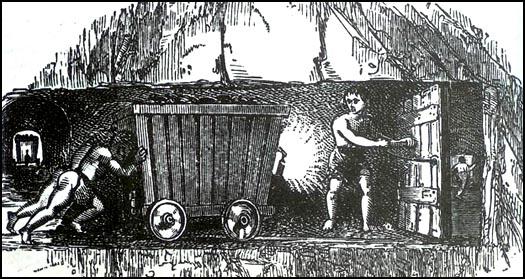
Trapper ex spartacus educational 00childLab2
Coal hauling by children UK National Archives industrial4b On right: All day standing in one place in dark, light on waggon. Trapper ex spartacus educational 00childLab2

Ex spartacus educational Woman lowering children to mine shaft 00coalEX2
It is presumed this drawing is of a the mother lowering her children into a pit shaft money
to earn money for the family.
Wages.
All of these children worked very long hours for small wages, while some apprentices to high paid skills such as file making were on twenty or more multiples of the lower paid.
File making. A major well paid skilled trade in Warrington.
Diagram. File making 25FIL 5 1 amended hand strike blow cutting copy3
Graphic .Hand stiking groves in file blank before case hardening.
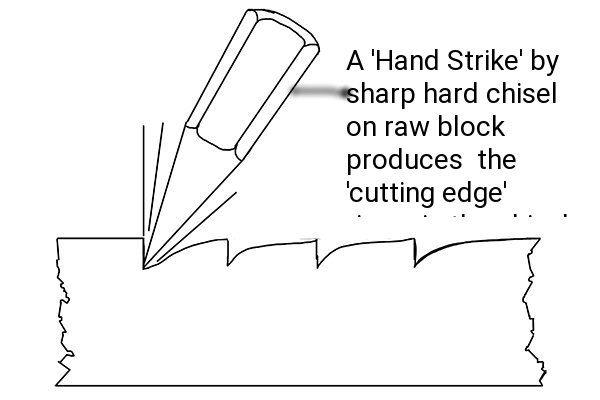
Ex https://www.gracesguide.co.uk/Peter_Stubs
Peter Stubs Ltd of Warrington, file, hand tool and steel manufacturers.
General
Peter Stubs (1756-1806) was in business manufacturing files on a small scale by 1777. By 1788 he had acquired the White Bear Inn in Bridge Street, Warrington, and was combining file manufacture there with his business as an innkeeper, brewer and malt maker. He gave up the White Bear concerns in 1803.
[CLHG Writer’s note. The beer waste was used to harden the steel when quenched as both beer and urine have hardening properties on quenching steel.]
1802 the file business moved to a larger site at Scotland Road, in the Cockhedge area of Warrington, where a works including file cutting shops and forging shops had been built.
1806 After Peter Stubs’ death in 1806 the business was developed by his sons, John, William and Joseph Stubs.
The firm sold files made from steel - principally saw-files, watch and clock files and, from 1815, larger machinery (engineers’) files. It also sold a wide variety of other tools, clock engines, small machines and wire, including pinion wire, for making toothed wheels for watches and clocks, and steel wire. The Stubs workshop produced files, carrying out the basic processes of forging, cutting and hardening, and all the attendant subsidiary processes.
1826 Stubs began producing steel themselves, at a newly acquired works in The Holmes, Rotherham, in Yorkshire. The Warrington Works in Rotherham supplied the file works in Warrington with steel and produced other types of steel for sale in England and Europe.
1842 The steel works was expanded at a cost of £20,000. Steel for re-melting was imported from Sweden.
By 1841 the file works had a work force of 200. To cope with demand, some file cutting was done by out-workers. All the other Stubs products were made by cottage industry out-workers and small firms, mainly in South-West Lancashire. Stubs products were sold throughout the U.K. and were also exported. Significant overseas markets included Russia, America, France and what is now Germany.
The company later expanded into steel production at Warrington and became a major world manufacturer of Silver Steel. The modern firm produces Silver Steel, steel wire, key steel and a wide variety of other specialist steel products.
Graphic. Link to Video on file making.
https://www.youtube.com/watch?v=m-xxCuk3Vys
Antikythera Fragment #3 - Ancient Tool Technology - Hand Cut Precision Files
At about 5 minutes into this video it shows exactly the same method, used in metal on anvil, rotated and cut by chisel. The same method was use in Warrington by treadle rope benches for file making some 1800 years later after the Antikythera instrument was made in Greece.

File making by chisel blow on blank Screenshot 2019 10 12 12 16 09
Other trades

Fustian loft ex cheshire image bank approx 1840 Warrington Manchester Road Screenshot 2019 10 11 13 17 12. Such lofts gave many women a long day stamding/walking perhaps 20 miles walking in a day to and fro in the loft, slowly and carefully cutting the 'loops' in cloth to make 'fustian' type cloth.
Link to Lymm site with image of fustian cutting, mostly by girls and ladies, but also in second link, by men acording to the second link at a family blog..
Link:
Lymm, village website image with fustian cutter in action.
Link
Link to Portrait of a Fustian Cutter in Warrington Museum and Library.
Warrington Museum Portrait of a Fustian Cutter
Mills with children.

Later than the1840s of the talk in 1911. Photo of mill working children, still at this stage children were in a cotton mill. Lewis Hine Spinners in a cotton mill 1911
Workhouses..
Later, workhouses would try to get some childen into apprenticeships to ease the burden on the parish costs, or employ them inside the workhouse at a weaving business.
Records of Lymm and Pauper apprenticeships were shown to us, with children bound to masters for long terms by both workhouse and sometimes their own parents to try to save costs and give opportunity at end of a low paid child (say 5 or7 years old to 16 years old) employment period.
Beating and bullying.
Always the 'children' were at very low wages and usually without any protection from harm or bullying or beating by superiors in the workplace.
Education.
Education depended on 'Sunday Schools', the school in the workhouse, and an effort in the establishment of "the National Schools".
Ex Wikipedia notes:
A National school was a school founded in 19th century England and Wales by the National Society for Promoting Religious Education. These schools provided elementary education, in accordance with the teaching of the Church of England, to the children of the poor. Together with the less numerous British schools of the British and Foreign School Society, they provided the first near-universal system of elementary education in England and Wales.
(Webmaster's note. Scotland had a completely separate system and had some form of parish schools from The Scottish Education act of 1496 with a plan for the establishment of a school in every parish from 1560 and many acts to enforce schools to be established over the next century.)
Warrington benefited from a Natioal School
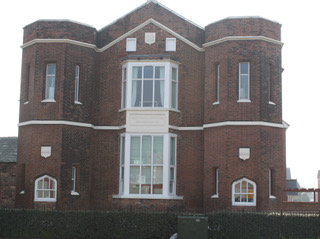

National School jpg ex Anna Alexander (Boys and Girls entrance notice over front lower wndows) National School Plaque jpg
Also refer photo on https://historicengland.org.uk/services-skills/education/educational-images/former-national-school-warrington-5271
A brief historyof the National Schools is on website
PDF-CofE-National Schools History
History notes in above pdf are on website:
Law changes in employment of children.
Major changes were made to the old rules from the 1500s, to try to improve conditions but the law was not rigidly enforced or obeyed, while some improvement was made, it was mainly by Non-Conformist employers in the Warrington area.
Wikipedia comment https://en.wikipedia.org/wiki/History_of_labour_law_in_the_United_Kingdom#Child_labour
Child labour
While the endeavour to enforce labour apart from a contract died out in the latter end of the eighteenth century, sentiment for some time had strongly grown in favour of developing early industrial training of children. It appears to have been a special object of charitable and philanthropic endeavour in the seventeenth century, as well as the eighteenth, to found houses of industry, in which little children, even under five years of age, might be trained for apprenticeship with employers. Connected as this development was with poor relief, one of its chief aims was to prevent future unemployment and vagrancy by training in habits and knowledge of industry, but not unavowed was another. motive: " from children thus trained up to constant labour we may venture to hope the lowering of its price." The evils and excesses which lay enfolded within such a movement gave the first impulse to the new ventures in labour legislation which are specially the work of the nineteenth century. Evident as it is " that before the Industrial Revolution very young children were largely employed both in their own homes and as apprentices under the Poor Law," and that "long before Peel's time there were misgivings about the apprenticeship system," still it needed the concentration and prominence of suffering and injury to child life in the factory system to lead to parliamentary intervention.
From Parliament UK records. Key dates
Link: https://www.parliament.uk/about/living-heritage/transformingsociety/livinglearning/19thcentury/keydates/
Legislation Key Dates
1601
Elizabethan Poor Law: parishes to be responsible for their poor
1760s
Jonas Hanway, merchant and philanthropist, campaigns to improve working conditions for chimney sweeps' apprentices
1776
Poor Law costing £1.25 million annually; in 1802, £4.25 million, and in 1832, £7 million
1788 - 'Act for the Better Regulation of Chimney Sweepers and their Apprentices'
Sets eight as minimum age for apprenticeship
1800
20,000 apprentices employed in cotton mills
1802 - Health and Morals of Apprentices Act
The first piece of factory legislation
1819 - Cotton Mills Act
No child to be employed under the age of nine in cotton mills
1831 - Factory Act
Limits working day to 12 hours for those under 18
1833 - Factory Act
No children under nine to be employed in factories; most important provision was the appointment of factory inspectors
1834 - Poor Law Amendment Act
Reorganises poor relief under central control
1834 - Chimney Sweeps Act
Raises minimum age of apprenticeship to 10
1840, 1864 and 1875
Further Acts passed to limit the employment of children by chimney sweeps; only the last has any effect
1842 - Mines and Collieries Act
Women and young children under 10 forbidden to work in mines
1844 - Factories Act
Introduces safety regulation in factories
1847 - Factories Act ('Ten Hours Act')
Establishes the ten hour day for women and young people aged 13-18
1850 - Coal Mines Inspection Act
Appoints inspectors of coal mines
1851
Census reveals more than 24,000 boys under 15 working in coal mining
1851
Cotton industry employing 255,000 men, 272,000 women; woollen industry employing 171,000 men, 113,000 women
1860 - Coal Mines Regulation Act
Raises age limit for boys from 10 to 12
1867 - Factory Acts (Extension) Act
Brings all factories employing more than 50 people within the terms of all existing factory legislation; forbids the employment of children, young people and women on Sundays
1872 - Coal Mines Regulation Act
Pit managers to have training
1881 - Mines Regulation Act
Home Secretary empowered to appoint official inquiries into mine accidents
1891 - Factory and Workshop (Consolidating) Act
Raises minimum age of employment in factories to 11; consolidates all previous safety and sanitary regulations
Long hours and little joy.
Vivid descriptions of child labour and the partial relief by some Gentlefolk and Non-Conformist persons throughout these years was illustrated during the talk.
Thanks
The members and visitors gave their enthusiastic thanks to the speaker for such an enlightening talk.
Extra to talk.
Your webmasters personal comment on this still ongoing problem.
Unfortunately today.
We dress in fashion, and drink tea / coffee mostly based on child labour.
Child labour still gives low cost to UK persons, but we shift the child labour to other countries far out of sight.
Tea / Coffee pickers in Brazil to give cheap tea / coffee
Child labour in the fashion supply chain.
Where, why and what can be done, Guardian article
https://labs.theguardian.com/unicef-child-labour/
The ILO [International Labour Organisation] estimates that 170 million are engaged in child labour, with many making textiles and garments to satisfy the demand of consumers in Europe, the US, and beyond.
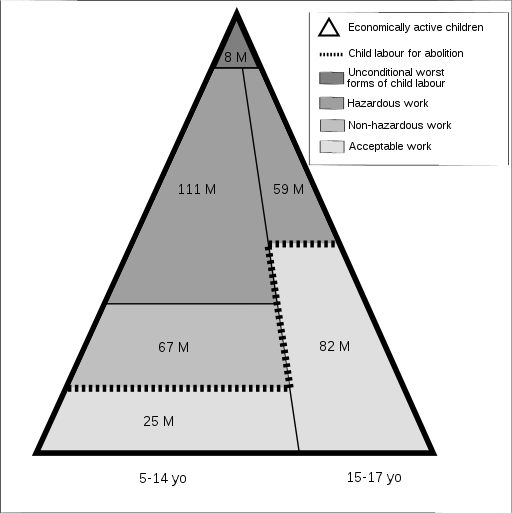
Children work at all stages of the supply chain in the fashion industry: from the production of cotton seeds in Benin, harvesting in Uzbekistan, yarn spinning in India, right through to the different phases of putting garments together in factories across Bangladesh.
QUOTE.
What companies use child labour today?
Fashion Brands that are said to use Child Labour:
H&M: Well, this company has been caught in scandals many times, and they have always been involved in major humanitarian issues over many years. ...
Forever 21: ...
GAP: ...
Nike: ...
Zara: ...
Urban Outfitters: ...
7 Aldo: ...
8 Primark:
In South and Central America including Mexico.
Maquilasolidarity.
From: https://en.archive.maquilasolidarity.org/issues/worker_rights/child_labour
For current information on our ongoing work on the living wage, women's labour rights, freedom of association, corporate accountability and Bangladesh fire and safety, please visit our new website, launched in October, 2015: www.maquilasolidarity.org
Why do some companies employ children?
Many of us remember media exposes of young children sewing Nike soccer balls in Pakistani sweatshops for six cents an hour. The national and international media coverage of Nike's use of child labour focused world attention on sweatshop abuses in the garment and sports wear industries.
Less well-known are the stories of teenage girls, often times single mothers themselves, sewing clothes in maquiladora factories in Central America and Mexico for major North American retailers.
It's true that some of these teenagers -- 12 and 13 year olds -- are working illegally. But others -- 15 or 16 year olds -- are often legal employees, pressured to work excessively long and illegal hours that prevent them from finishing high school.
Whether underage workers or legal employees, these young people suffer the same treatment at the hands of their employers: 12 to 18 hour work days, often without overtime pay; verbal, physical, and sometimes sexual abuse; low wages and unhealthy working conditions.
Garment manufacturers in Central America's free trade zones, Mexico's maquiladora factories and Asia's export processing zones, claim they prefer to hire young girls and women because they have nimble fingers. Workers suspect that children and young people are hired because they are less likely to complain about illegal and unjust conditions. And more importantly, they are less likely to organize unions.
In fact, child labour is often directly linked to the low wages paid to adult workers, restrictions on the right to organize, and the lack of affordable child care.
In Bangladesh, many child labourers in the garment industry are the children of women working in the same factories.
If women workers received a living wage and/or their employer provided daycare, their children would not have to work.
UNQUOTE.
e
